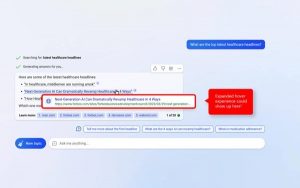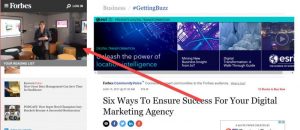Just a couple years ago, most major publishers seemed to be unconcerned with ad blocking. However, because of the swift growth in usage and move to mobile devices, it has become a much bigger problem with huge implications for the future of advertising.
Ad blocking is exactly what it sounds like – using browser plug-ins like AdBlock Plus to hide any form of disruptive advertising: anything from the banner ad to auto-play videos. And it’s moving to the mobile web too. AdBlock Plus has launched an Android extension, and they are working on developing for iOS. However, even more critical and worrying for publishers is that ad blocking software will be part of the upcoming iOS 9 release and native to the Safari browser.
Interest in ad blocking has exploded over the last few years:
According to a recent study published by Adobe and PageFair, the number of monthly active consumers turning to ad blocking software has grown 41% in just 12 months to 198 million. That equals almost $ 22 billion in lost revenue for 2015 and 14% of global ad spend. The two predict that by 2016 the cost of ad blocking will rise to $ 41.4 billion.

Why are so many consumers turning to ad blocking software? Adobe and PageFair found that among millennials who haven’t yet begun using the software, the top reason for starting would be due to an increase in the number of ads they currently see.
In 2014’s report from PageFair and Adobe, 30% of current ad block users were open to seeing some ads, but intrusive ads convinced them to begin using ad blocking services. Among the ads consumers wanted to see the least, display ads with audio (78%), non-skippable mid-rolls in videos (81%), and website popovers (83%) were the ones people were the most unwilling to view. The ads that were least offensive? Image ads.

“Ad blocking is up because millennials are patently rejecting interruptive advertising,” Mic CEO Chris Altchek told Digiday. “That’s why we partner with advertisers to create meaningful stories that users seek out instead of go out of their way to block.”
So what are websites doing to combat the use of ad blocking software?
Some sites and creators are appealing directly to the users. For example, music site Mixcloud targets ad blockers with custom messages requesting the user to whitelist the site or subscribe to their premium service.
Love @mixcloud‘s approach to when you have Adblock installed. Nicely done, Mixcloud, welcome to the whitelist. pic.twitter.com/g0vyLAvMYJ
— Josh Lachkovic (@JoshLachkovic) December 8, 2014
Others like the Hulu and UK broadcaster ITV have attempted to actually block people using ad blocking software by preventing them from viewing the content if they have ad blocking enabled. However, while a good temporary fix, the issue here is that both sides are now locked into battle to outsmart the other.
Many publishers, especially ones geared towards millennials like Mic and Buzzfeed, are turning to branded content and experiences in hopes of creating advertising consumers actually choose to consume.
Ad blocking, for better or worse, isn’t going anywhere, and is a sign that consumers are becoming more frustrated with advertising tactics. And this isn’t just a problem for publishers to solve. Brands and their agencies that hope to spread their messages effectively will need to look at what’s causing this frustration and respond to it with better content.
Learn more about what it takes to create effective content. Download the Content Marketing Aperture here!
This article was previous published at the Chute Blog.
(164)





